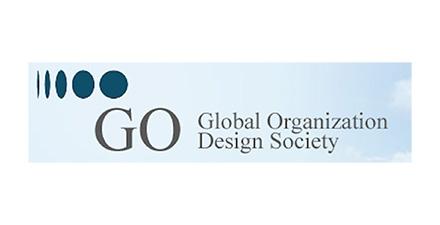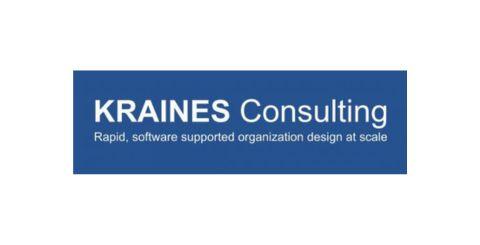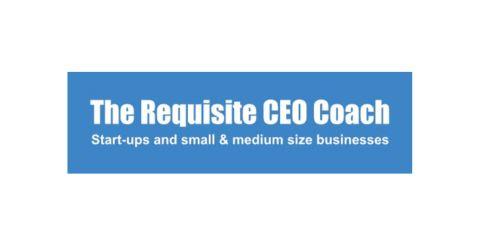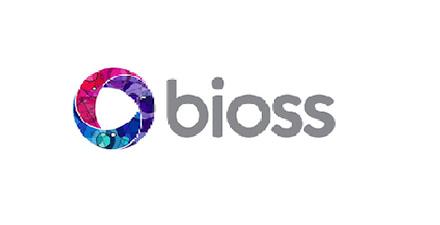By Nancy R. Lee (Xlibris, August 31, 2017, 418 pages [eBook version])
Summary of the book:
"The Practice of Managerial Leadership (2nd edition)" serves as a comprehensive guide to Requisite Organization (RO), a science-based set of principles and practices for organizational structure and management developed by Dr. Elliott Jaques over 55 years of research. Nancy Lee, who worked closely with Dr. Jaques for over two decades, wrote this book to make his often complex theories more accessible and actionable for a wider audience.
The core premise of the book is that organizations function optimally when their structure, staffing, and management systems align with the inherent nature of human capability and work. It focuses on the managerial role as a critical component for achieving organizational goals. Lee explains Jaques's foundational concepts, such as levels of work complexity, time-span of discretion (the target completion time of the longest task assigned to a role), managerial accountability, and the necessary conditions for effective manager-subordinate relationships.
The book is intended for managers at all levels, as well as academics, students, and consultants interested in organizational design and effectiveness. It argues that the application of RO principles can lead to significant improvements in productivity, profitability, and employee trust. Furthermore, it aims to foster a healthier working environment conducive to individual growth and development.
This second edition is substantially updated from the first, featuring extensive new material. Notably, it includes new chapters dedicated to Requisite Compensation and Requisite Talent Pool Development, reflecting an expanded scope and deeper dive into practical applications. The book is also fully illustrated and includes short readings on specific topics like Comprehensive Organization Charts and Linking Tasks to Corporate Goals, alongside a chapter detailing Lee's extensive experience in implementing RO principles over twenty-five years. The ultimate goal is to equip readers with the understanding and tools to build and lead more effective and "requisite" organizations.
What are the book's key features?
-
Based on Requisite Organization: Grounded in the comprehensive and scientifically-derived theories of Dr. Elliott Jaques.
-
Accessibility: Translates complex RO concepts into a more linear, understandable, and easy-to-read format.
-
Practical Focus: While explaining theory, it is geared towards application by managers and practitioners.
-
Comprehensive System: Describes an integrated total system for managing organizations, covering structure, staffing, managerial practices, and more.
-
Updated Second Edition: Includes significant new material, most notably chapters on Requisite Compensation and Requisite Talent Pool Development.
-
Illustrated: Contains visual aids to help clarify concepts.
-
Implementation Insights: Features a chapter on the author's extensive practical experience in implementing RO.
-
Supporting Materials: Includes short readings on specific RO topics.
What is the book’s unique contribution? What is the core thesis of the book, and how does the author articulate it?
The book's unique contribution lies in its successful effort to make the profound and often intricate work of Dr. Elliott Jaques on Requisite Organization accessible to a broader audience of managers, consultants, and students. While Jaques's own writings are extensive and can be theoretically dense, Lee distills these principles into a more digestible and actionable format without sacrificing their integrity.
The core thesis is that for organizations to be truly effective, productive, and to foster human satisfaction, they must be designed and managed in a "requisite" manner. This means aligning organizational structure, roles, accountabilities, and managerial practices with scientifically-derived understandings of human capability and the nature of work at different levels of complexity. The author articulates this by systematically explaining Jaques's concepts—such as the stratified nature of work, time-span of discretion as a measure of work level, the essential functions of a manager, and the importance of clear role accountabilities—and then demonstrating how these can be practically applied. The book posits that adopting these principles leads to enhanced trust, productivity, profitability, and a more conducive environment for employee growth.
How does the author define key terms or concepts central to the book’s argument?
The author defines key terms and concepts rooted in Requisite Organization theory. Some central ones include:
-
Requisite Organization (RO): An organization structured and managed in a way that is required to meet its goals effectively while providing a healthy and enabling environment for its members.
-
Levels of Work (Strata): The idea that work exists in distinct, qualitatively different levels of complexity, and that individuals have different levels of conceptual capability to handle this complexity.
-
Time-Span of Discretion: The target completion time of the longest task or sequence of tasks assigned to a role. It is used as an objective measure of the level of work in a role.
-
Managerial Accountability: The specific responsibilities a manager has for their subordinates' output and for creating an environment where subordinates can work effectively. This includes setting context, planning, assigning tasks, coaching, and appraising performance.
-
Task: An assignment with a specified output (What), quantity (How much), quality (How well), and resources (By when, with what resources).
-
Potential Capability: An individual's innate mode of processing information and their highest potential level of work complexity they can handle at a given point in their maturation.
-
Applied Capability: The actual level of work an individual can currently carry out effectively in a specific role.
Lee defines these terms by explaining their theoretical underpinnings from Jaques's research and then illustrating their practical significance in managerial leadership.
To what degree is the book theoretical vs practical? To what degree are there case studies or practical implementation steps?
The book strikes a balance between theory and practice, with a strong leaning towards making the theory actionable. It is firmly rooted in the extensive theoretical framework of Requisite Organization. However, its primary aim is to serve as a practical guide for managers and those involved in organizational design.
The second edition, in particular, enhances its practical value by:
-
Including a chapter detailing Nancy Lee's extensive (over 25 years) experience in implementing RO.
-
Providing "short readings" on specific practical topics like "Comprehensive Organization Charts" and "Linking Tasks to the Corporate Goals."
-
Adding new chapters on "Requisite Compensation" and "Requisite Talent Pool Development," which are inherently practical applications of RO theory.
While an earlier edition was noted by one reviewer as being somewhat conceptual and light on implementation details beyond a couple of case studies, the revisions in the second edition appear to address this by offering more explicit guidance and drawing from the author's deep consulting experience. It aims to provide not just the "what" and "why" of RO, but also more of the "how."
About the author(s)
-
Provide a 150-word summary of the author’s biography:
Nancy R. Lee is a distinguished consultant and expert in Requisite Organization (RO), having collaborated closely with its founder, Dr. Elliott Jaques, for over twenty years. As President of Requisite Organization Associates Inc., she has amassed extensive international experience in applying RO principles to help diverse organizations improve their structure, leadership, and overall effectiveness. Lee is highly regarded for her ability to translate the complex, science-based tenets of RO into accessible and practical guidance for managers, executives, and consultants. She has been an active contributor to the field, serving on the board of the Global Organization Design Society, where she has championed professional development and generously shared her knowledge through workshops and published materials. Her work is dedicated to fostering organizations that are not only productive and profitable but also provide environments where employees can thrive.
-
Provide a URL to a comprehensive profile about the author if available.
A profile for Nancy Lee can be found on the Global Organization Design Society website: https://globalro.org/media/2937
-
Provide a URL to a complete list of the author’s publications, both books and articles.
A specific, comprehensive list of all of Nancy R. Lee's publications dedicated solely to Requisite Organization is not readily available in a single URL. Her primary work in this area is "The Practice of Managerial Leadership." Other authors named Nancy Lee publish in different fields, such as social marketing or fiction. The Global Organization Design Society website may list articles or resources she has contributed.
How does this book fit into the author’s evolution of thinking and body of work in 150 words?
This book, especially its second edition, represents a cornerstone of Nancy Lee's professional life's work. It embodies her deep understanding of Requisite Organization, cultivated through decades of direct collaboration with Elliott Jaques and extensive practical application in real-world settings. The first edition was a significant step in making Jaques's complex theories more broadly accessible. The second edition demonstrates an evolution, incorporating her accumulated wisdom from years of implementation, addressing critical areas like compensation and talent development, and further refining the practical guidance offered. It solidifies her role not just as an interpreter of Jaques's foundational work, but as a leading practitioner who has advanced its application. The book is a testament to her commitment to equipping managers with a robust, science-backed framework for building more effective and humane organizations, reflecting a continuous refinement of how RO can be best taught and implemented.
The book in context
-
What is the historical or organizational context in which the author wrote this book?
The book is built upon the 55 years of research and consulting work of Dr. Elliott Jaques and his colleagues, which began in the mid-20th century. The first edition of Lee's book was published in 2007, and the second, significantly revised edition in 2017. This period (2000s-2010s) was characterized by ongoing challenges for organizations globally, including rapid technological change, globalization, and persistent issues with employee engagement, leadership effectiveness, and organizational design. Many management theories and fads came and went, often lacking a robust theoretical or empirical basis. Requisite Organization, as presented by Lee, offers a more stable, comprehensive, and scientifically-grounded alternative. The book was written in a context where there is a continuous search for more effective ways to structure and manage organizations to achieve goals and create better work environments.
Other similar books in the field
Determining "number printed" is difficult. However, here are four influential books in organizational management and leadership that offer different, yet sometimes complementary or contrasting, perspectives:
-
Requisite Organization: A Total System for Effective Managerial Organization and Managerial Leadership for the 21st Century by Elliott Jaques (e.g., Cason Hall & Co. Publishers, 1996; Gower Publishing, 2002).
-
Good to Great: Why Some Companies Make the Leap...And Others Don't by Jim Collins (HarperBusiness, 2001).
-
The Fifth Discipline: The Art & Practice of The Learning Organization by Peter Senge (Doubleday/Currency, 1990; revised edition 2006).
-
Leadership: Theory and Practice by Peter G. Northouse (SAGE Publications, multiple editions, e.g., 9th ed. 2021).
Compare and contrast the key themes and approaches in the top four similar books.
-
Lee/Jaques (Requisite Organization):
-
Theme: Emphasizes a highly structured, scientific approach to organizational design based on levels of work complexity (measured by time-span of discretion) and individual capability. Focuses on clear accountability, defined managerial roles, and integrated systems for talent management, compensation, and task alignment.
-
Approach: Prescriptive and systemic. Provides a total framework for how organizations should be structured and managed for optimal effectiveness and fairness.
-
-
Collins (Good to Great):
-
Theme: Identifies common characteristics of companies that achieved enduring greatness, such as Level 5 Leadership, getting the right people on the bus, confronting brutal facts (the Stockdale Paradox), and the Hedgehog Concept (understanding what a company can be best at, passionate about, and drive its economic engine).
-
Approach: Empirical and descriptive, based on comparative research of high-performing companies. Offers principles derived from studying success, rather than a complete top-down organizational theory.
-
-
Senge (The Fifth Discipline):
-
Theme: Focuses on creating "learning organizations" capable of continuous adaptation and improvement. Highlights five disciplines: systems thinking, personal mastery, mental models, building shared vision, and team learning.
-
Approach: More philosophical and developmental. Emphasizes cultural change, collective learning, and understanding interconnectedness, rather than specific organizational structures or hierarchies in the same way as RO.
-
-
Northouse (Leadership: Theory and Practice):
-
Theme: Provides a comprehensive overview of the major historical and contemporary leadership theories, including trait, skills, style, situational, contingency, path-goal, leader-member exchange, transformational, authentic, and servant leadership.
-
Approach: Academic and survey-oriented. It aims to describe and compare different theoretical lenses on leadership, rather than advocating for a single model or system of organizational management.
-
Contrast: Lee/Jaques offer a "hard," structural, and systemic framework, while Collins offers empirical principles from successful companies. Senge focuses on "softer," cultural and learning aspects, and Northouse provides a broad academic survey of leadership theories. RO is unique in its detailed prescriptions for hierarchical structure and role definition based on measurable work complexity.
Who are the most likely readers?
-
Who does the book's Preface or Foreword describe as the intended readers?
The Global Organization Design Society states the book is written for "managers, academics, students, and practitioners who are interested in or involved in structuring, staffing, and managing organizations." Synopses also mention it is for "managers at all levels."
-
What level of manager is most likely to read the book? Also, what specific functional areas of management are likely to be most interested?
While intended for managers at all levels, it is particularly relevant for:
-
Senior Executives (CEOs, VPs): Those responsible for overall organizational design, strategic alignment, and long-term effectiveness.
-
Middle Managers: To understand their roles, accountabilities, and how to manage their teams effectively within the RO framework.
-
HR Professionals: For insights into talent management, compensation, role definition, and organizational development from an RO perspective.
-
Organization Design Consultants: As a guide to a comprehensive system for structuring organizations.
-
Strategy Professionals: To understand how organizational structure can support or hinder strategic execution.
-
-
What areas of study specialization are most likely to read the book?
-
Management Theory
-
Organizational Behavior
-
Industrial/Organizational Psychology
-
Human Resources Management
-
Strategic Management
-
Organizational Design and Development
-
What is the style of writing? Journalistic to formal academic with full citations.
The style is described as "linear, easy-to-read" and aims to make Dr. Jaques's complex conceptualizations "much easier to grasp." This suggests a professional business writing style that is more accessible than formal academic treatises. While grounded in rigorous theory (and likely referencing Jaques's work), it prioritizes clarity for practitioners. It is not journalistic but aims for a balance between academic rigor and practical readability.
What is the age level of the writing?
Adult professional.
Given the subject matter, what is the minimum level of education needed for a basic understanding of the book?
Some college education (e.g., an associate's or bachelor's degree in a related field) or equivalent significant professional experience in management would likely be needed for a basic understanding, given the conceptual nature of RO.
What is the level of education in what fields is needed for a full grasp and ability to use the book in one’s work?
For a full grasp and the ability to confidently apply the concepts in one's work, a bachelor's or master's degree in business administration, management, human resources, organizational psychology, or a related field would be highly beneficial. Alternatively, extensive managerial experience coupled with dedicated study of the material could also lead to a full grasp.
What others say
-
Are there any controversies or debates involving the author that might influence one’s reading?
No specific controversies involving Nancy Lee herself were found. However, Requisite Organization as a theory can be considered controversial by some. It proposes a highly structured approach that may seem rigid compared to more fluid or "flat" organizational trends. Its emphasis on hierarchy and defined levels of work can be challenging to prevailing management fads. The theory "requires radical change in how executives are chosen and companies are organized," which can naturally lead to debate and resistance.
-
How was the book received by CEOs and VPs, organization design and general management consultants, academics, and the public? Include comments from the Academy of Management and the Harvard Business Review.
-
General Reception: The book is generally well-regarded by those familiar with or seeking a comprehensive, systematic approach to organizational design and management. Dr. Harry Levinson, Emeritus Clinical Professor of Psychology at Harvard Medical School, provided a positive endorsement for the book, stating that Nancy Lee "has made his [Jaques's] thinking much easier to grasp. That, in turn, should make this volume, highly useful to executives, consultants and graduate students who seek to make organizations more effective."
-
Organization Design Community: The Global Organization Design Society, which promotes RO, features and supports the book, offering the second edition as a free PDF, indicating its value to this community.
-
Academics: The book is suitable for academics and students studying organizational theory and management.
-
Specific HBR/AoM Comments: Specific reviews or formal comments on "The Practice of Managerial Leadership, 2nd Edition" from the Harvard Business Review or the Academy of Management journals were not prominent in the search results. However, HBR has historically published articles by Elliott Jaques (e.g., "In Praise of Hierarchy," January 1990), indicating an openness to his foundational ideas.
-
Reviews: Summarize the top three positive reviews and the three most critical reviews.
Formal, detailed reviews for this specific edition are somewhat scarce in readily available public domains, with more commentary existing for RO in general or for the first edition.
-
Positive Sentiments/Reviews:
-
Accessibility and Clarity: A key strength highlighted (e.g., by Dr. Harry Levinson and the Global Organization Design Society) is Nancy Lee's ability to distill Elliott Jaques's complex theories into a more understandable and actionable format, making it accessible to a wider audience of managers and consultants.
-
Comprehensiveness: The book is valued for presenting RO as a total system, covering various aspects of organizational functioning, from structure and roles to talent management and compensation (especially in the 2nd edition).
-
Practical Relevance (Enhanced in 2nd Ed.): The inclusion of Lee's implementation experience and new chapters on practical applications like compensation and talent pool development in the second edition is seen as a significant enhancement, addressing some earlier critiques about the first edition being too conceptual.
-
-
Critical Sentiments/Reviews (often related to RO itself or earlier editions):
-
Perceived Rigidity: Some critics of Requisite Organization find its highly structured and hierarchical nature to be too rigid or prescriptive, especially when contrasted with more agile or flat organizational paradigms.
-
Complexity of Concepts: Despite Lee's efforts to simplify, the underlying concepts of RO can still be challenging for some readers to fully grasp and implement without dedicated study and guidance.
-
Implementation Challenges: A review of the first edition on Amazon noted that while the book was well-written, it could have provided more practical guidance on the "how-to" of implementation and the pitfalls, though the second edition aims to address this with a dedicated chapter on implementation. The "radical change" RO requires is itself a challenge.
-
Practical implications
-
What practical recommendations does the author make for managers or leaders? Are the recommendations universal or primarily for small businesses, large corporations, nonprofits, government agencies, etc.?
The book makes numerous practical recommendations rooted in RO principles, including:
-
Clearly defining managerial roles and accountabilities.
-
Structuring the organization with appropriate layers based on levels of work complexity.
-
Matching individuals' capabilities to the complexity of their roles.
-
Establishing fair and effective systems for task assignment, performance appraisal, coaching, and compensation.
-
Developing talent pools aligned with future organizational needs.
The principles and recommendations are intended to be universal, applicable to all types of working organizations, including industrial, commercial, service, public sector, and non-profit entities, regardless of size, though the detailed application might vary.
-
-
How complete are the methods for implementation? Are there checklists or frameworks for immediate implementation?
Requisite Organization itself is a comprehensive framework. The second edition of the book enhances the implementation guidance by including a chapter on Nancy Lee's extensive implementation experience and short readings on specific tools like "Comprehensive Organization Charts." While it may not offer simple "checklists for immediate implementation" in the way some tactical guides might, it provides the principles and systemic understanding needed to guide a thorough implementation process. RO implementation is typically a significant undertaking, not a quick fix.
-
Are there success stories from organizations that used the author’s approach?
The book's premise is that applying RO principles leads to positive outcomes like increased productivity, profitability, and employee well-being. Dr. Jaques's work was developed through decades of consulting with numerous organizations in various countries. While specific company names as "success stories" are not detailed in the general book descriptions, the RO literature and community often refer to successful applications. The first edition reportedly contained two short case studies as testimonials.
-
Are there any pitfalls or challenges the author warns about in applying the ideas?
The book (and RO literature generally) acknowledges challenges:
-
Complexity and Effort: Grasping RO concepts requires time and intellectual effort.
-
Radical Change: Implementing RO often necessitates significant changes in organizational structure, executive selection, and management practices, which can face resistance.
-
Testing and Adaptation: Like any new thinking, it requires careful application and testing within one's own organizational context.
The second edition's chapter on implementation experience likely delves further into navigating such challenges.
-
-
What short-term vs. long-term benefits does the author claim might result from applying the book’s ideas?
-
Short-term benefits: Increased clarity in roles and accountabilities, improved task assignment, better manager-subordinate relationships, and more effective meetings.
-
Long-term benefits: Sustained increases in productivity and profitability, enhanced organizational trust and fairness, a healthier and more motivating work environment, improved employee development and career progression, and greater organizational adaptability and resilience.
-
How can I get the book
-
Free download: Provide the URL on the Global Organization Design Society website if available
Yes, the Global Organization Design Society offers a PDF version of "The Practice of Managerial Leadership - Second Edition (2017)" by Nancy Lee without charge.
It can be accessed via this page: https://globalro.org/media/2220 (look for the download link on the page).
-
Free download for Z-library
I cannot provide links to Z-library or similar sites due to copyright and ethical considerations. Please use legitimate sources to access books.
-
Amazon.com URL for the book
The book can be found on Amazon:
-
Hardcover:
https://www.amazon.com/Practice-Managerial-Leadership-Second/dp/1469190826 -
Kindle Edition:
https://www.amazon.com/Practice-Managerial-Leadership-Second-Nancy-ebook/dp/B075F8P891
-




